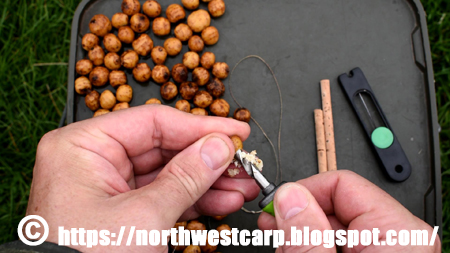Tiger nuts are a great bait for carp fishing but how do you present them to the fish?, in this article we'll take a look at my favourite tiger nut carp rig.
There are a few rigs you can use for tiger nuts but my favourite is the easy to tie carp rig which utilises a knotless knot, my tiger nut carp rig is just 8-10 inches of ESP Sink Link Braid
To present a tiger nut on this rig I use a 6mm ESP Nut Drill
With the notch from the nut drill located, it will guide the drill as you apply pressure and begin to core out the tiger nut. By twisting the drill and applying gentle pressure whilst holding the nut still you can bore out the middle of the tiger nut, you should do this until the nut drill has gone right through the nut, carry on twisting the drill as you remove it from the tiger nut and you should be left with a nut that has a perfect 6mm hole right through it.
With the hole drilled take a 50mm x 6mm cork stick and push the cork into the hole, it should fit snugly and if you find it difficult to push in, twist the cork stick as you push it into the tiger nut. Once flush with the other side of the tiger nut take a pair of braid scissors and cut the cork stick flush with the tiger nut on the other side as well.
The cork stick through the middle should turn the tiger nut hookbait into a wafter, use a hair needle to put the tiger nut onto the rig, you should go through the cork in the middle when you hair rig your tiger nut hookbait and it goes on the rig just like a boilie would. That's my favourite tiger nut carp rig complete, just fish the tiger nut wafter style with a handful of free offerings around the rig and I promise it will be very very effective at catching carp.
Below is a video on how to tie my easy to tie carp rig to use with tiger nuts, also below is the inline lead setup I use with the rig and how to prepare tiger nuts for carp fishing if you ever want to do them yourself, it's certainly a lot cheaper than buying tins of tiger nuts from the tackle shop.
Tight Lines.
Mark.












